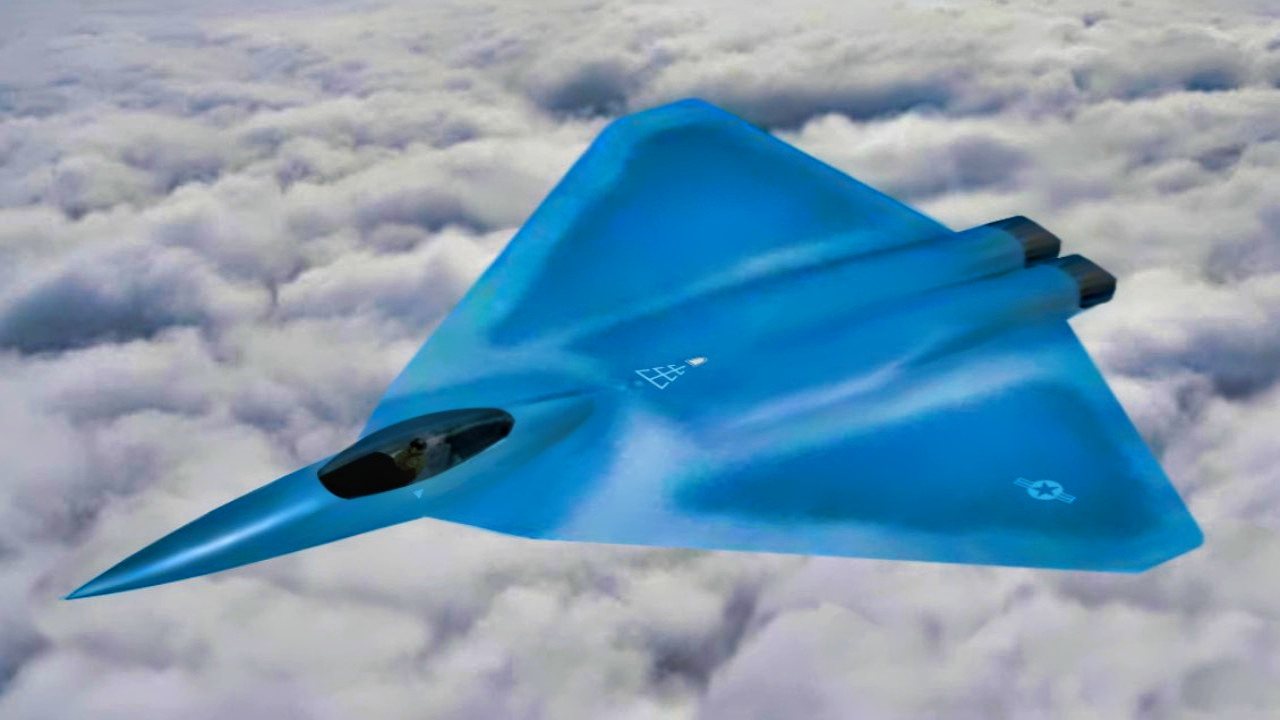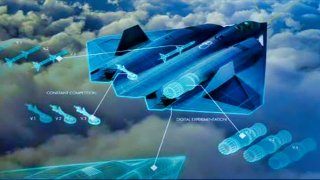X-44 MANTA: The Greatest Fighter Plane That Never Flew
The X-44 MANTA was an experimental aircraft developed by the U.S. Air Force based on the F-22 Raptor, designed without traditional tail surfaces to reduce radar visibility and enhance maneuverability using thrust-vectoring engines.
Summary and Key Points: The X-44 MANTA was an experimental aircraft developed by the U.S. Air Force based on the F-22 Raptor, designed without traditional tail surfaces to reduce radar visibility and enhance maneuverability using thrust-vectoring engines.

-The program aimed to create a highly stealthy and agile fighter, potentially superior to the F-22.
-However, the project was canceled in 2000 before reaching production. Elements of the X-44 design influence today's Next Generation Air Dominance (NGAD) program, but the original MANTA will never be realized.
The X-44 Manta Was Never Destined for Dominance, Sadly
When one thinks of an aircraft with no tail, they normally think of plane in distress. One could be forgiven for not understanding that aircraft can be built purposely without a tail. That’s precisely what the United States Air Force did when they developed the X-44 MANTA concept plane. As with so many things in the US military, “MANTA” is an acronym that stands for, “Multi-Axis No-Tail Aircraft” (this is not to be confused with the US Navy’s new unmanned underwater vehicle, the Manta).
Based off the F-22A Raptor, the X-44 was intended to be the next step in advanced US military warplanes. The MANTA took what was back then the radical design of the F-22 and augmented it. Primarily, by removing the aircraft’s conventional vertical and horizontal tail surfaces.
Engineers at the time rightly believed these components significantly contributed to radar visibility (a key element of both the F-22 and X-44 projects were to make the birds as stealthy as possible). Instead, the X-44 MANTA’s designers added in thrust-vectoring engines. This new engine not only made the X-44 stealthier than even its advanced F-22 big brother, but it also made the experimental bird more maneuverable.
Indeed, the removal of the MANTA’s tail surfaces and the replacement of those surfaces by the thrust-vectoring engines were one of the most innovative concepts for that era. According to Jim Matthews writing in a 2008 article for the Smithsonian Magazine, “Thrust vectoring enables the pilots to fly up and over in a very tight arc [and] gives [pilots] the nose authority to turn the jet while the wings are stalled, similar to a controlled flat spin.”
Comparisons to the F-22
Today, the F-22A is powered by Pratt & Whitney F119 turbofans, each providing 35,000 pounds of thrust. The F-22’s vector thrust nozzle can “direct exhaust thrust up or down as much as twenty-four degrees.” This is an impressive capability that few modern warplanes possess. The MANTA had these abilities and more. The X-44, if you can believe it, was more impressive than the F-22.
The bird was almost invisible on radar because of these modifications.
A downside of not having tail surfaces is that the pilots who manned these birds, had they gone into production and been deployed, would have needed to be highly trained. Flying tailless birds, even with the assist of vector thrust engines, is a difficult undertaking. What’s more, going into combat with such a plane would have tested even the best fighter pilots.
The X-44 MANTA had an impressive weapons package. MANTA housed a single 20mm internal cannon, two AIM-9 Sidewinder missiles. Additional armaments of AIM-120 AMRAAM missiles as well as two 1,000-GBU-32 Joint Direct Munitions were included as well. As I wrote previously, had the X-44 been mass produced, it would have likely been even better than the F-22A Raptor (which has been called the “Michael Jordan of fighter planes”).
An Inauspicious End to a Great Program
In 2000, the X-44 program was canceled. The bird never made it beyond the conceptual stage. In an alternative reality somewhere, mixed squadrons of F-22 Raptors and X-44 MANTAS fly into battle, firing the onboard lasers that the Air Force got to work.
Sadly, the United States government today is actually broke—contrary to what our elites seem to think. Trying to build this system today would not make economical sense. Not to fear, though, the Air Force is pushing ahead with their Next Generation Air Dominance (NGAD) platform which is loosely based upon the X-44 MANTA. To think, this platform could have already been flying by now had the Air Force just stuck with its guns twenty-four years ago.

Sadly, we’ll never get to see these birds fly again. Not even in its sixth-generation warplane form under the auspices of NGAD. There’s simply no way Congress will allow for that program to continue as the rest of the country feels the economic pinch.
Author Experience and Expertise: Brandon J. Weichert
Brandon J. Weichert, a National Interest national security analyst, is a former Congressional staffer and geopolitical analyst who is a contributor at The Washington Times, the Asia Times, and The-Pipeline. He is the author of Winning Space: How America Remains a Superpower, Biohacked: China’s Race to Control Life, and The Shadow War: Iran’s Quest for Supremacy. His next book, A Disaster of Our Own Making: How the West Lost Ukraine, is due October 22 from Encounter Books. Weichert can be followed via Twitter @WeTheBrandon.
All images are Creative Commons or Shutterstock.
From the Vault
Russia Freaked Out: Why the U.S. Navy 'Unretired' the Iowa-Class Battleships
Battleship vs. Battlecruiser: Iowa-Class vs. Russia's Kirov-Class (Who Wins?)
Image Credit: Creative Commons and/or Shutterstock.


